Using photovoice and participatory communication to build a fundraising and engagement campaign
Editor’s note: Annie Levy is based in New York City. She is a chief story officer who discovers and brings corporate/organizational stories and brands to life at www.AnnieLevy.com. Levy is also the communications and story fellow at Cantilever, a digital design and development agency.
I became part of the Quirk’s community a year ago when I wrote Photovoice: The power of images in qual - Using photovoice to discover stories hiding in plain sight.
I have utilized and honed photovoice and other forms of participatory communication to:
- Help organizations discover and understand what matters most to their customers/clients.
- Streamline offerings using customer/client discoveries.
- Create and amplify clear and engaging messages to tell the story of who they are and what they do – in both inward- and outward-facing messages.
- Tell a brand story through the images and expressions of real people.
With over 15 years of experience using this method, it has consistently proven to be a way to ask questions that allow people to move beyond superficial or stock answers into genuine, meaningful and actionable responses, as well as providing a wealth of material for authentic internal and external communication. It has allowed me to create materials that in and of themselves become the “spokesperson” for the cause, idea and/or community.
A recent project spearheaded by Community Building Art Works (CBAW) and done in concert with Blue Star Families, brought me in contact with the U.S. military community.
CBAW connects veterans, health care providers and civilians through workshops led by professional artists who reflect the diversity of the population they serve. In 2022, they connected nearly 7,000 participants all over the world through creative writing workshops for military-connected individuals, health care workers and civilian artists.
Blue Star Families is committed to strengthening military families by connecting them with their neighbors – individuals and organizations – to create vibrant communities of mutual support. Through a partnership since 2020, it helps CBAW reach a wide range of people in the military community.
I was honored to be involved with both groups, originally to engage teens of Blue Star Families who continuously face the challenges of deployment-related relocations. The organizations wanted to provide a community for these teens, a rite of passage and a way to understand their experiences to discover ways to ease these transitions. A photovoice project called “Finding Home Again: Through Our Eyes” was born.
Creating a “Giving Tuesday” campaign
Seema Reza, a poet, essayist, author of two books and CEO of Community Building Art Works, has dedicated much of her career to using the arts as a tool for narration, self-care and socialization within the veteran and military community. When CBAW began thinking about its Giving Tuesday campaign which highlighted three themes – combat loneliness, build community and give belonging – the group decided to further harness the power of photovoice as a tool in creating the campaign.
Creating on-ramps for people to tell stories of impact: photovoice as a tool
The first project in our portfolio led to a meaningful partnership with Reza and CBAW. She wanted the organization’s Giving Tuesday campaign to authentically and meaningfully feature the voices and experiences of the community that was being served. She asked me to partner on this campaign as she had already seen the power of photovoice to provide people with tools that could allow them to express themselves with ease.
Selecting photovoice participants
The participants for the campaign were selected as they each had differences in experiences but were all committed members of the CBAW community. There was particular interest in mixing participants from different places and who found the programs in different ways. CBAW wanted people to hear the different voices and think, "I identify with that, I would be welcome there."
Creating questions and assignments
CBAW staff and I worked on the questions we wanted people to answer with their images, designing these around the campaign’s themes. We knew that these would be the keys to unlocking responses that photos have a unique way of doing. In designing assignments, I always work with project partners to essentially try out assignments with a variety of staff members.
- Will the assignments be such that they can elicit images?
- Will questions allow people the flexibility of sharing as much or as little as they want about themselves?
- Will they get to the heart of what we want to know?
In this case we wanted to understand how CBAW’s programs created personal transformation.
Telling stories that have personal meaning
Our first assignments: An important thing to know about me and where I belong
We began with “an important thing to know about me.” This allowed participants to share as much or as little personal information as they were comfortable with and have the experience of gaining and sharing insights about themselves through images.
This elicited images with captions such as:
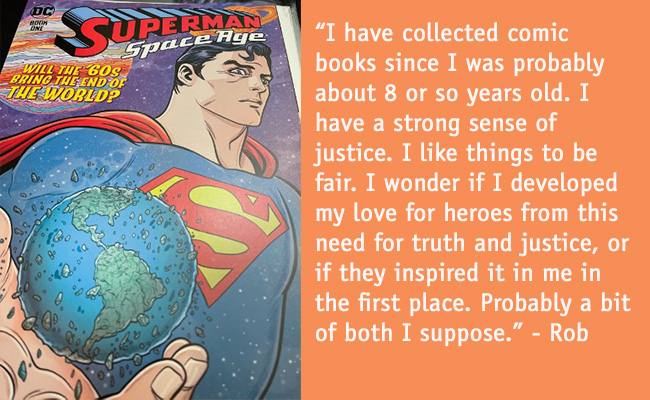
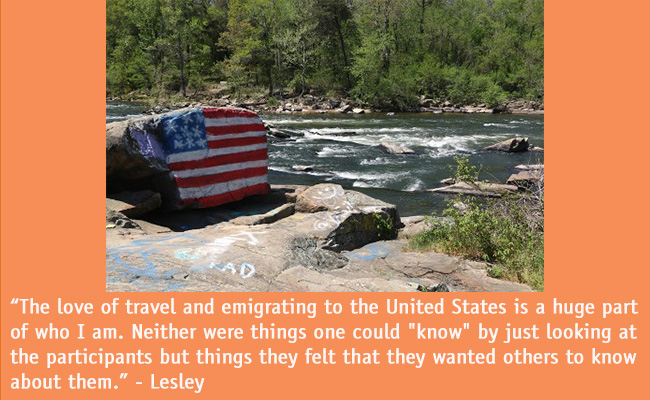
Where I belong
Because the campaign was to be titled #GiveBelonging, we asked participants to share a place where they feel like they belong.
These responses also varied greatly.
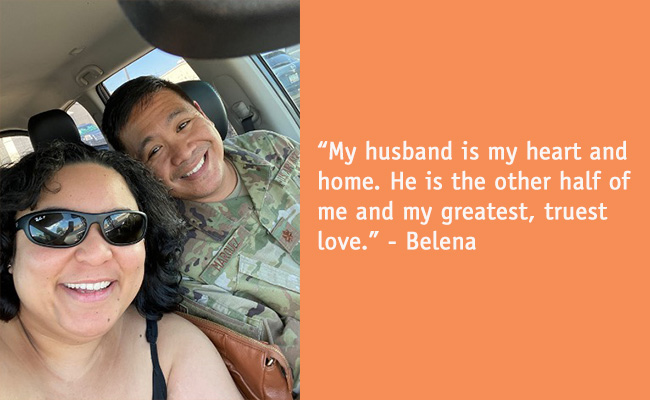
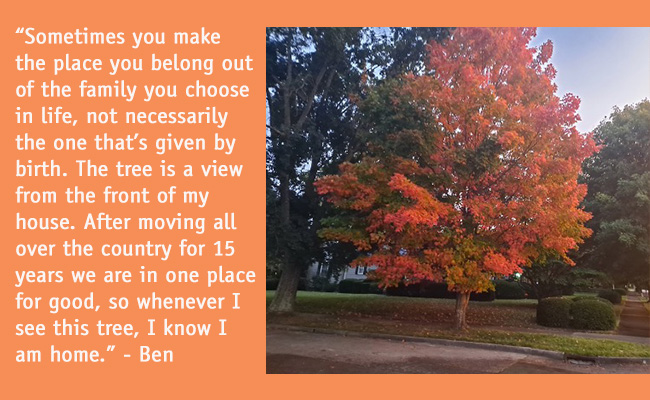
Organizational mission: Art as a tool of transformation
In keeping with CBAW’s mission and campaign, we asked participants to share images of the place(s) where they write or create art with a caption of how that activity has transformed the space.
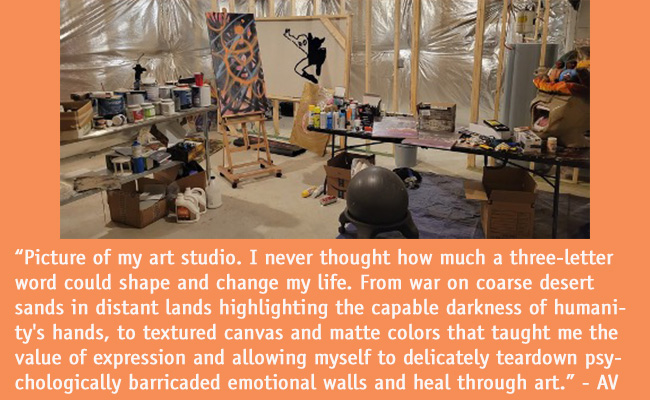
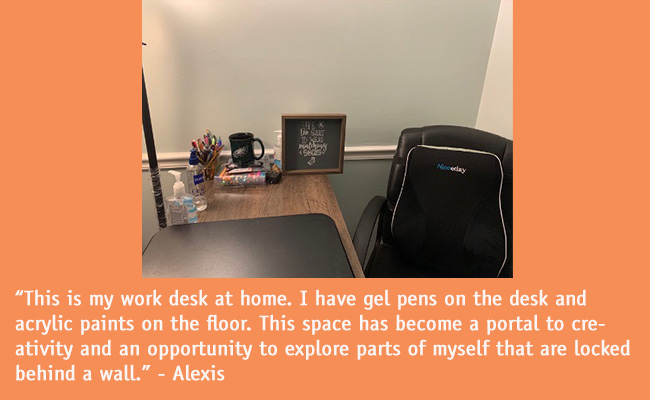
Art and transformation: The personal impact of the non-profit’s mission
Our meetings were building to our final assignment in which we asked participants to submit a photo that depicts how writing/creating art and specifically CBAW programs have transformed them personally.
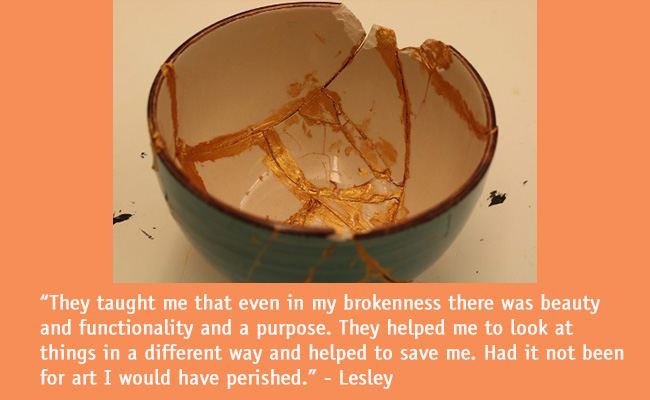
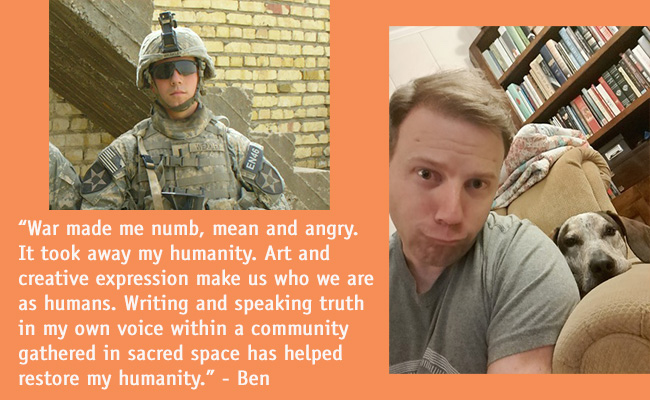
The group was struck by Ben’s images in that they seemed to depict two different people. And provide a way for him to speak about this with what felt like “evidence” of his transformation.
Photovoice as a tool for developing campaigns
Reza noted, “We used photovoice as an entry into a thoughtful conversation about what belonging means, how this group of people came to understand it for themselves and why they feel it in our community. It was the announcement of the launch of Mission Belonging, our initiative to make the world a little less lonely.”
“I think photovoice, by creating a container and process for sharing oneself, is a great way to help people connect deeply while considering their lives creatively. Any organization that serves people, that seeks to create impact in the lives of people, would learn a lot about their stakeholders by listening to them in the careful way that photovoice allows,” Reza said.
Because of Reza’s commitment to using the arts is at the heart of CBAW’s mission, the creative aspect of photovoice served as a tool that was completely aligned with that mission – the life-transforming power of the arts.
It was an honor to work on this project. The generosity in participants giving of themselves and sharing their experiences is always profoundly moving – and certainly true with this group.
You can see part of the campaign here: https://cbaw.org/blog/giving-belonging-receiving-community.
To contact Annie Levy visit www.annielevy.com or e-mail annie@annielevy.com. To contact Seema Reza visit www.cbaw.org or e-mail seema@cbaw.org